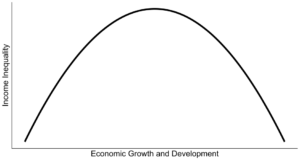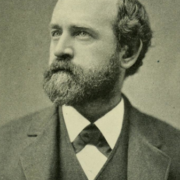Labor Day Reflections: Growth Doesn’t Solve Inequality
by Taylor Lange
Labor Day, like other holidays of remembrance, is an opportunity to reflect on the past and critically consider the future. Our memory ought to include the foot soldiers of the labor movement, from the 10,000 coal miners who fought in the Battle of Blair Mountain to the steel workers who duked it out with the Pinkertons at Homestead mill. We owe our rights as workers to the bitter struggles of many who preceded us.
Despite the gains of the labor movement, it seems we still have a long way to go. It is well-documented that while the productivity of the American worker has continued to rise, our compensation has risen slower. All that extra surplus has gone right into the bosses’ pockets; Mother Jones would be up in arms by now.
One result of the asymmetric rise in wages and productivity has been worsening income inequality. Some would argue that economic growth will fix the problem. After all, a rising tide lifts all boats, right? Brian Snyder didn’t think so, and neither do I based on the following findings.
Revisiting Kuznets’ Curve

Figure 1. The Kuznets curve is a graphical representation of Simon Kuznets’ theory on inequality and economic growth.
The earliest and most influential economist to write about economic growth and income inequality was Simon Kuznets. He compared income data from developing and developed countries from the 1920s through the early 1950s, and found that the poorest 10-20 percent of households in the developed countries were earning a growing share of GDP while the top 10-20 percent were earning less. In developing countries, the reverse occurred; as these countries grew in terms of GDP (and developed in terms of GDP per capita), inequality worsened.
This stark contrast between developed and developing countries led Kuznets to speculate on the relationships between growth, development, and income inequality. He theorized that as a country grew and developed initially, its workforce would switch from agriculture to industry and rural to urban. The cost of migration and learning new skills would cause the laboring class to lose wealth and income while the capital class benefited from the increased output. Afterward, as labor became more skilled, laborers’ share of income would increase. In other words, Kuznets thought that economic growth would worsen income inequality initially, but ultimately lessen it.[i] Graphically, this appears as an inverted “U”—hence its nickname, the “Kuznets curve.”
Kuznets Versus Modern Data
While Kuznets’ analyses were groundbreaking for the time, the times have changed. When we consider the same countries Kuznets did, we discover that his initial findings no longer reflect today’s trends.

Figure 2. Inequality vs. GDP per capita. Inequality is the ratio of income received by the top 10 percent of earners to income received by the bottom 50 percent. Per capita GDP data are from 1960-2018. (Given the growth of per capita GDP during that period, the X axis is also a proxy for time.)
Data from the last 60 years provide insights on how the economy (in per capita terms) and the income share of the wealthiest Americans have grown.[ii] Towards the lower end of GDP per capita, we see that growth accompanies decreased inequality. Those data points happen to come shortly after Kuznets’ famous findings. The trend does not last, though, as inequality starts to increase again around 10,000 dollars of per-capita GDP, and per-capita growth thereafter benefits the wealthy disproportionately.
Keen observers would note that inequality seems to be leveling off, suggesting the USA may be at another turning point like the one predicted by Kuznets. While this is plausible, several supposed turning points appear along the continuum of GDP per-capita growth, and are consistently followed by subsequent increases in inequality. How many bobs at the apple should the late Kuznets get? And, if we have a number of mini-Kuznets curves over time or at different levels of income, is that really a Kuznets curve at all?
While it’s possible that a few more years’ worth of data could see a true decrease in top earners’ shares, it’s likely that deliberate policy choices are mostly to blame for the expanding wealth of the rich.
Policy Arenas and Inequality
So, what are these policies? An extensive examination by the Economic Policy Institute (EPI) sheds some light on many of the major policies that have eroded American labor including:
- Trade deficits and outsourcing — Multinational companies and free trade agreements undercut the wages and job security of non-college educated workers in favor of protecting profits. Sending jobs overseas forced the USA to import more, resulting in a trade deficit that was disastrous for U.S. manufacturing.
- Erosion of unions and the right to organize — Anti-union sentiments have allowed for corporate attacks on workers’ rights, and a recent Supreme Court decision has been the latest in a series that have eroded workers’ ability to collectively bargain.
- Stagnation of the federal minimum wage — The last time the federal minimum wage went up was in 2009; we’re in the longest period without a raise since the minimum wage’s inception. Adjusting for inflation, the minimum of $7.25 is worth 16.5 percent less than it was at inception, which means you can buy even less with it.
- Lack of enforcement of wage theft laws — Wage theft occurs when workers are not paid for hours worked, or employers confiscate tips from their employees, among others. A study done by the EPI indicates that workers in ten U.S. states lose an average of 3,300 dollars per worker per year to wage theft.
All of these policies and oversights are symptomatic of a growth-driven mindset aimed at increasing consumption and output. These types of policies echo the adverse working conditions and standards that ignited the American labor movement and should be met with the determined opposition of Samuel Gompers himself!
A Just and Equitable Steady State
Addressing income inequality requires a societal desire for equality, followed by regulatory action of the government. We must be intentional and explicit with policies crafted for an equitable distribution of wealth as well as a sustainable size of economy. As Herman Daly argued, we need institutions that “limit the degree of inequality … since growth can no longer be appealed to as the answer to poverty.”[iii] For that matter, we can’t simplistically assume that degrowth or a steady state economy would ensure fairness either. Income fairness (not necessarily absolute equivalence of incomes or wealth) is a goal worth formulating policy for.
The violence and general unrest that characterized the labor movement is symptomatic of the link between social stability and income equality. Steady staters should consider and craft policy instruments to address income and wealth inequality. After all, how can a state be steady if it isn’t stable?
[i] Simon Kuznets, “Economic Growth and Income Inequality,” The American Economic Review 45, no. 1 (1955): 1–28.
[ii] World Inequality Lab, “World Inequality Database” (World Inequality Lab, 2021), https://wid.world/.
[iii] Herman E. Daly, “The Economics of the Steady State,” The American Economic Review 64, no. 2 (1974): 15–21.
 Taylor Lange is the ecological economist at CASSE.
Taylor Lange is the ecological economist at CASSE.







I hope everyone interested in this issue will read The Spirit Level and The Inner Level by Wilkinson and Pickett.
Both are excellent reads Patrick. I concur!
Taylor Lange’s Point 2, erosion of unions, is at an obscene level. The scare-mongering that prevented a union for Amazon warehouse workers in Alabama is the biggest defeat of the year, a story that has been lost in the shuffle. I would guess that the growth statistics of the Amazon corporation are bolstered by its ability to crush a union.
Necessity is the mother of invention and she needs to invent a new way soon. Inequality robs future generations of their education and opportunity to deliver for society. Hopefully when a new way evolves it is not grey, with state enforced growth police keeping an eye on activity. The mode of thinking must advance to realise we will be more content and have more time for life if we can see that stuff doesn’t make you happy. Society needs to evolve so as not to look up at the big consumer and down at the non consumer so that non consumers feel valued in society. Work and pay has to be fair so they can have a decent life. Consumers may consider, how much of this consumption is making me happy. Could I benefit from less work, less consumption and more time. The superwealthy can maybe reevaluate their situation also. Reminds me of Skyler in Breaking Bad asking Walt to stop the madness (while looking at a pallet load of Walts’ drug money) Just how high does this pallet need to be?